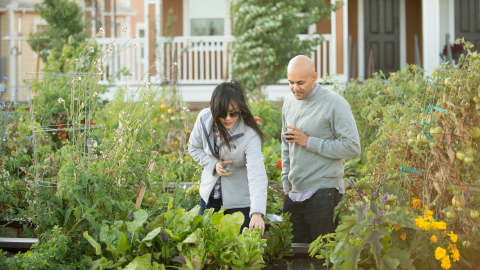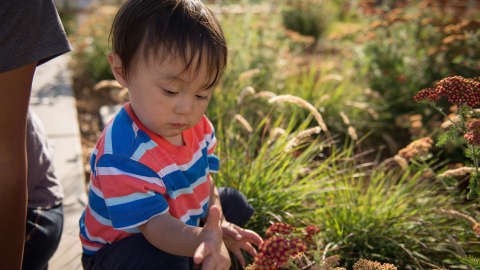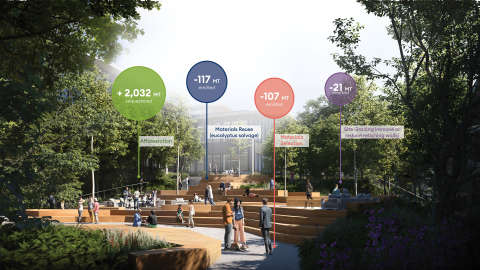
Alameda Point De-Pave Park, Alameda, CA
1. Waterfront Resilience
As waterfronts adapt over time due to sea level rise, they can be rejuvenated into green permeable edges that filter urban runoff improving ocean health, removing carbon preventing ocean acidification, and creating habitat for aquatic ecosystems. This evolution is an opportunity to connect people to water in their everyday lives, rethinking more adaptable ways of living, operating, and recreating along our shores. To ensure this transformation happens in an equitable way, decision making based on inclusive community engagement will lead to long term resilience.


2. Regeneration
The biodiversity crisis is understood to be as great of threat to humanity as climate change. To prevent rapidly increasing species extinction, preserving and restoring natural ecosystems with native plants and pollinators while sourcing sustainable materials will aide in the regeneration of these habitats. Careful attention to increasing groundwater infiltration and stormwater treatment greatly increases the viability of future biodiversity especially in regions threatened by fires and drought. Developing habitat management plans informs how to best maximize biomass that connect corridors and patches – contributing to the larger matrix of ecological connectivity.
Case Study: Crack Garden
Inspired by the tenacious plants that pioneer the tiny cracks of the urban landscape, the formal rows of the garden create order in the random. An act of removal exposed the soil beneath and created the possibility for a new garden to emerge. Created in 1999 by a group of neighbors, the Crack Garden was a precursor to the current trend of tactical interventions.
Although extremely minimal in scope and budget, the Crack Garden is refined in the creation of well-programmed spaces for the residents of this four-unit building. The side of the garden along the resident’s building is kept open for social activities, and the plants selected for the cracks can tolerate foot traffic. A jacaranda tree adds scale to create an anchor for the garden, providing needed overhead definition to help contain the space, as well as filtered shade and summer color. Potato vine is planted along the fences and back wall to grow on the cable trellis, and a five-leaf akebia vine creates textural interest on the back wall. The planting within the cracks is somewhat random, changing regularly depending on the desires of the resident gardeners.



The Climate Positive Design Pathfinder tool being applied to a CMG tech campus project.
3. Carbon Drawdown
While some climate impacts are already irreversible, with unprecedented action, there is still a chance prevent the most formidable. To contribute solutions to this global challenge, reducing emissions and increasing carbon sequestration is not only an opportunity, but a responsibility. Designing cities to be more walkable, bikeable, and friendly to public transportation greatly reduces greenhouse gas emissions as does using recycled, repurposed or low-carbon materials. Increasing planting sequesters more carbon and prevents urban heat-island effect, which also creates co-benefits of better air quality and healthier urban environments.
By advocating through design, we take steps towards a more equitable and sustainable future – for all.

